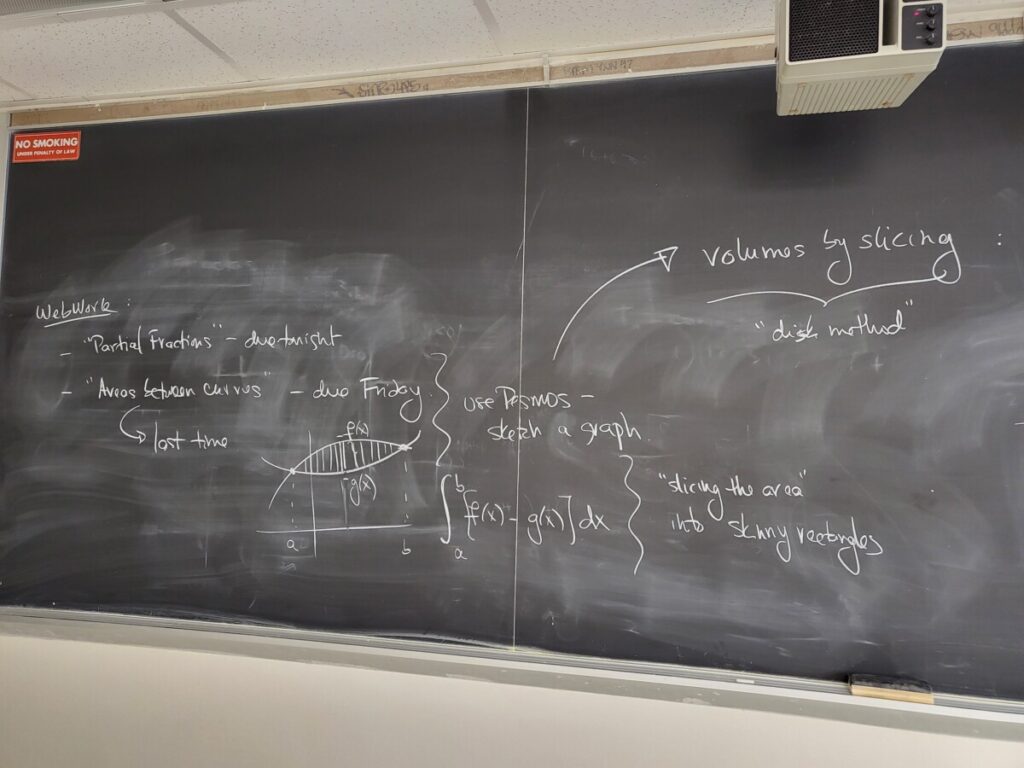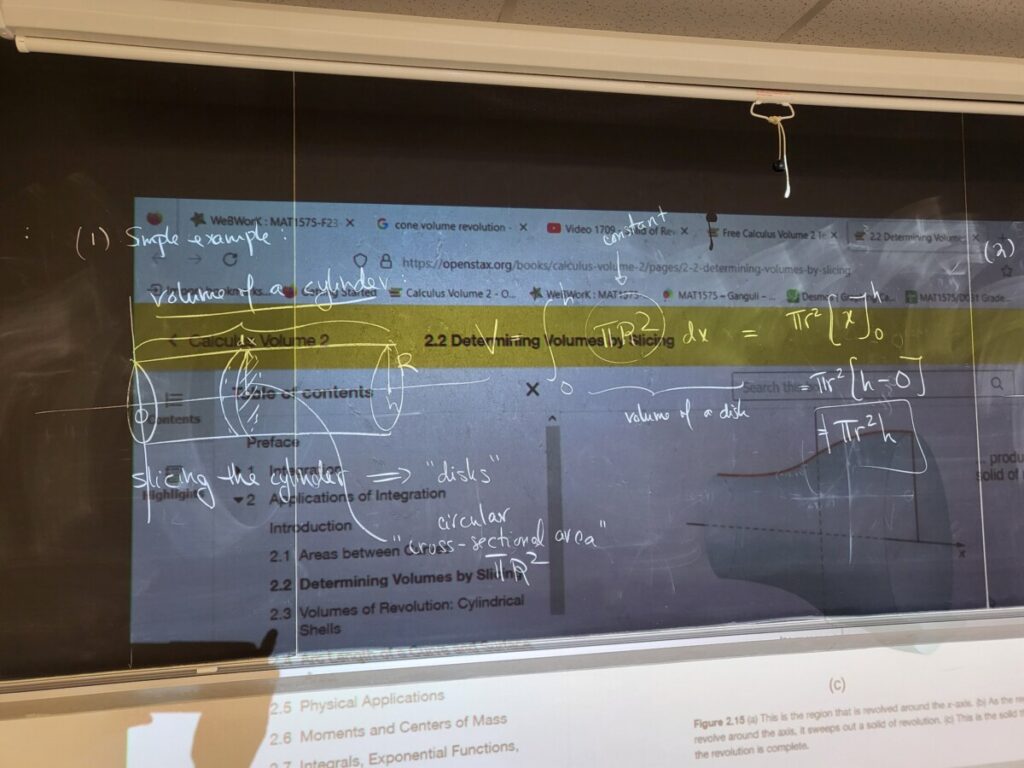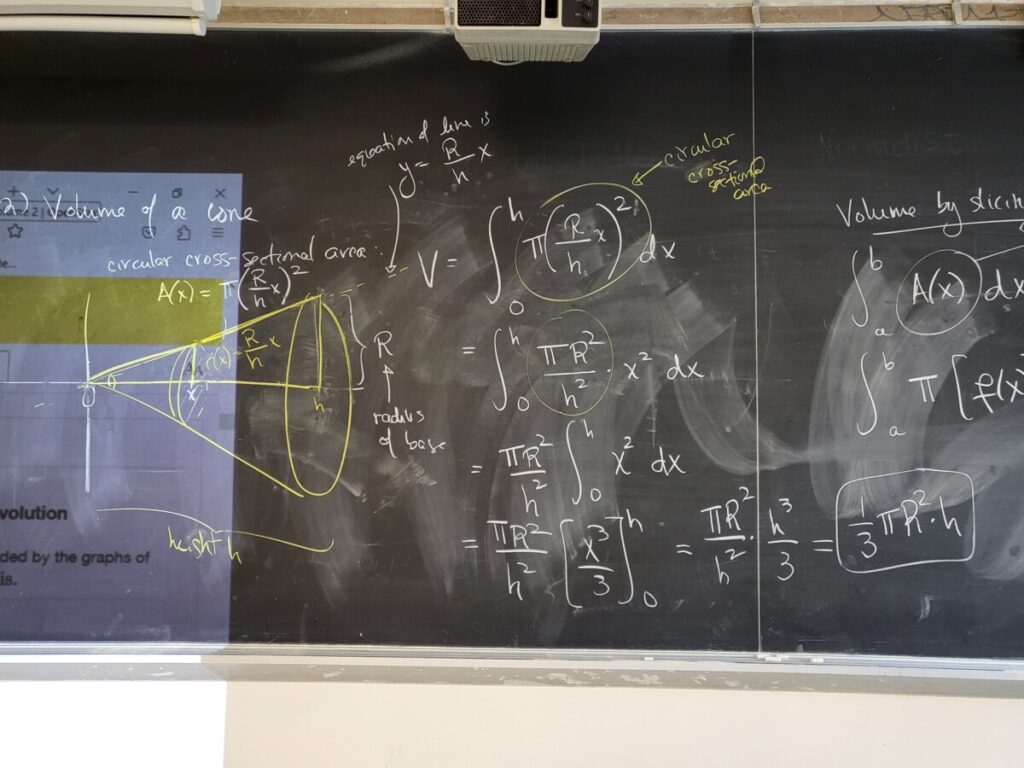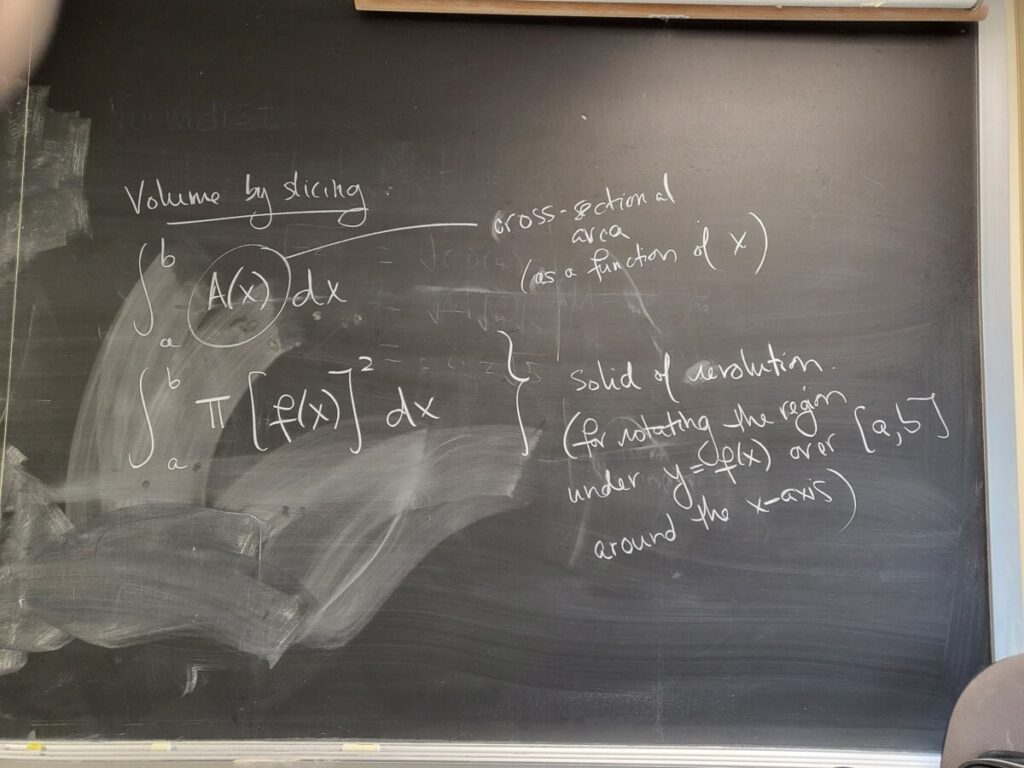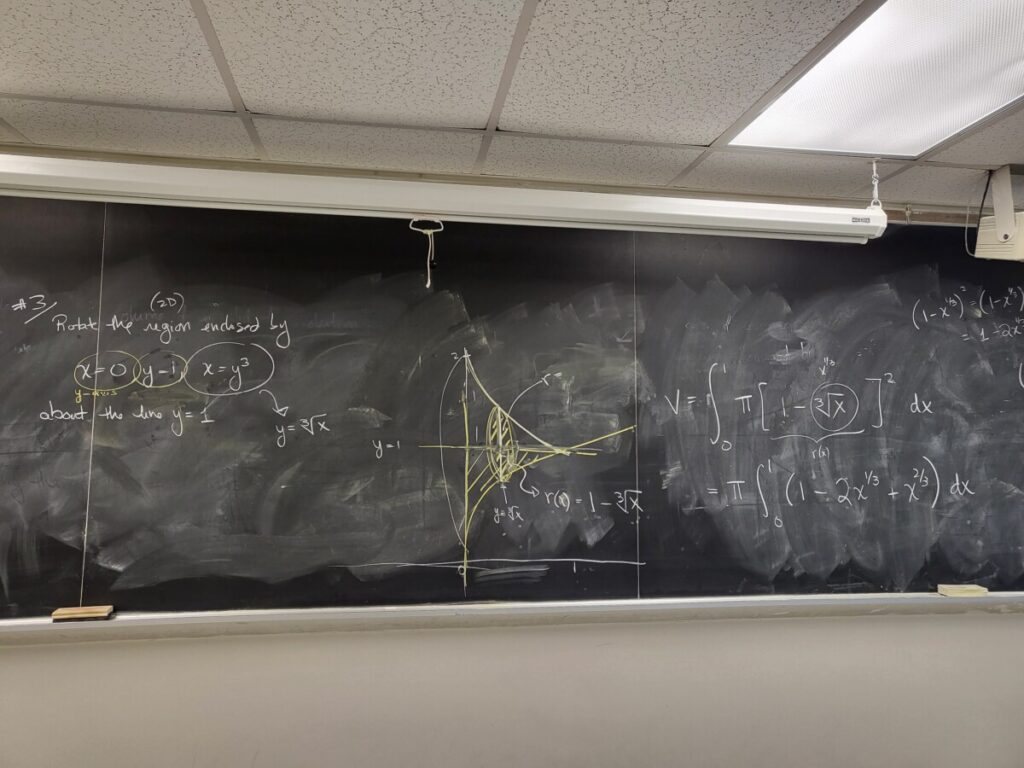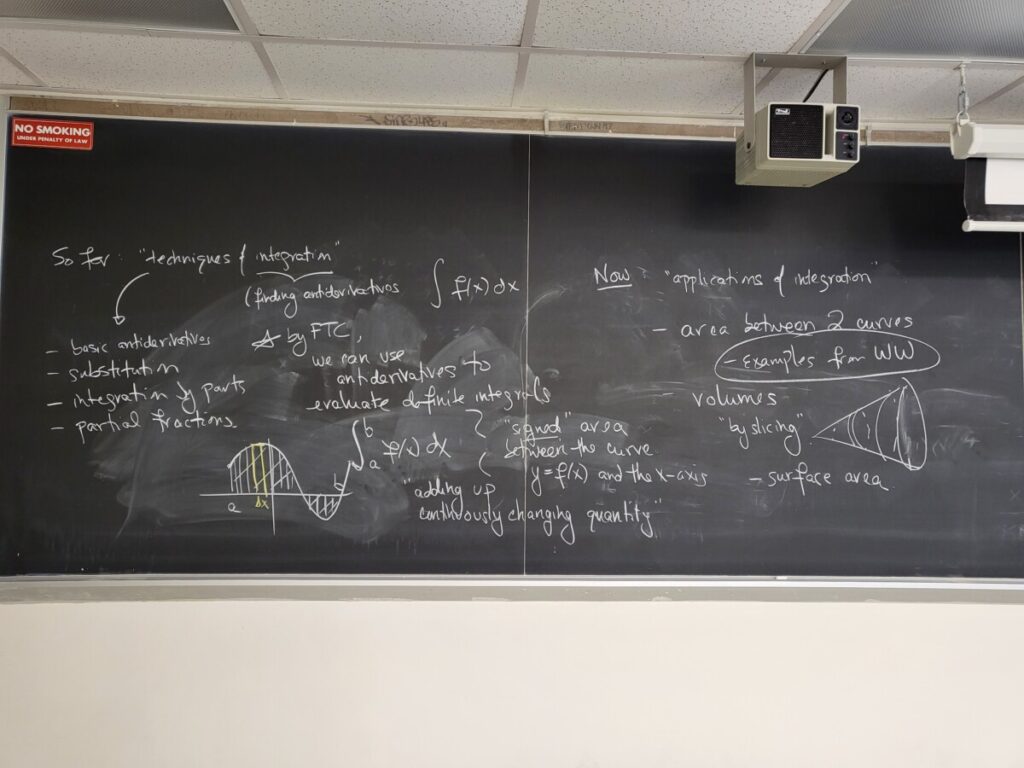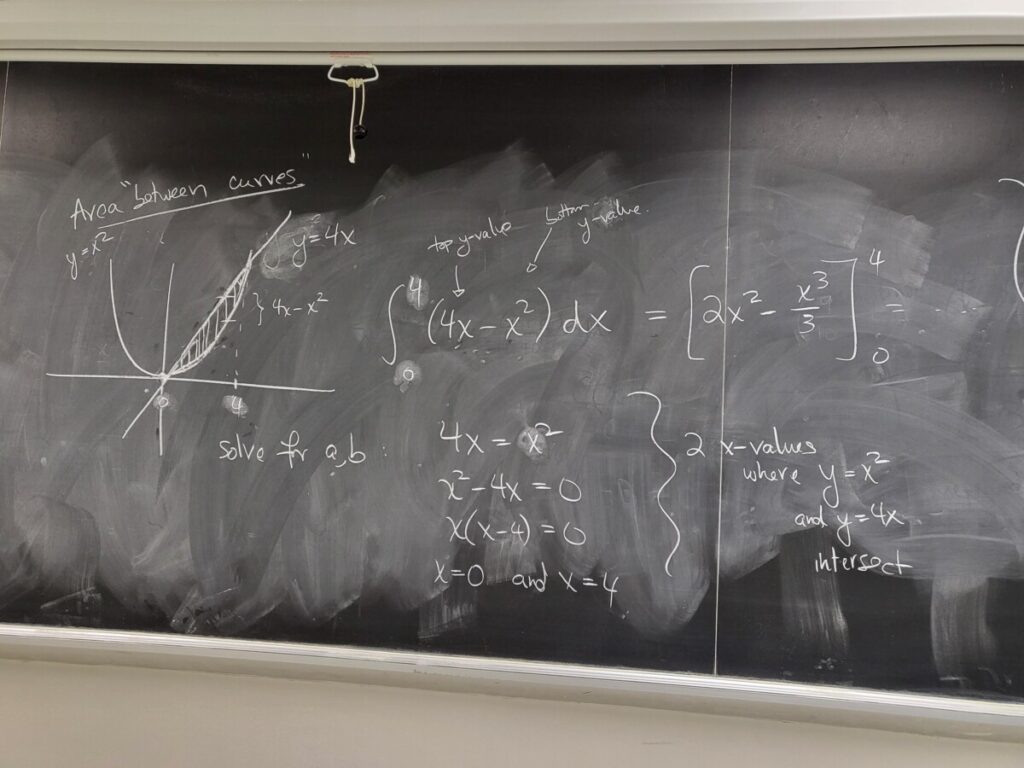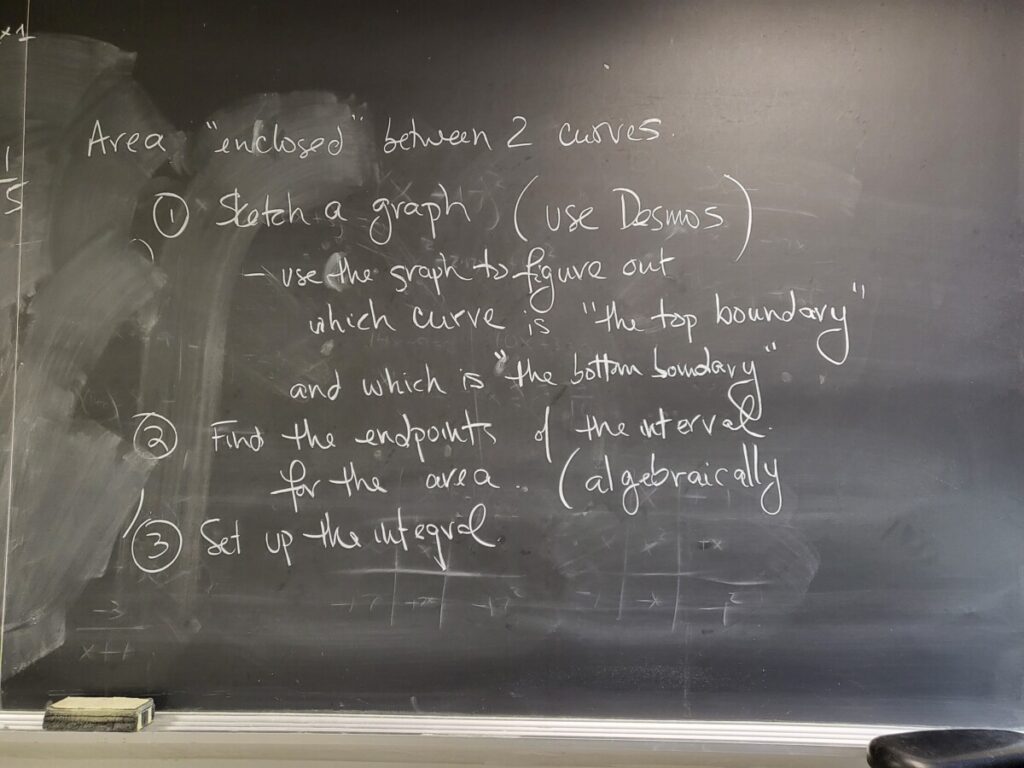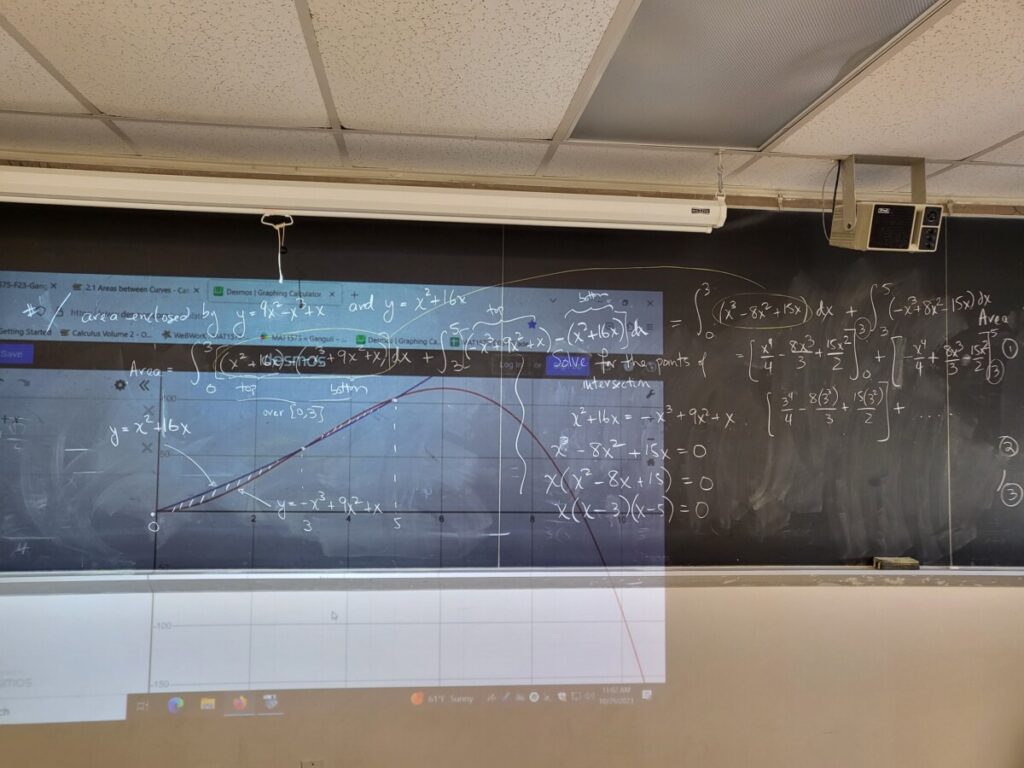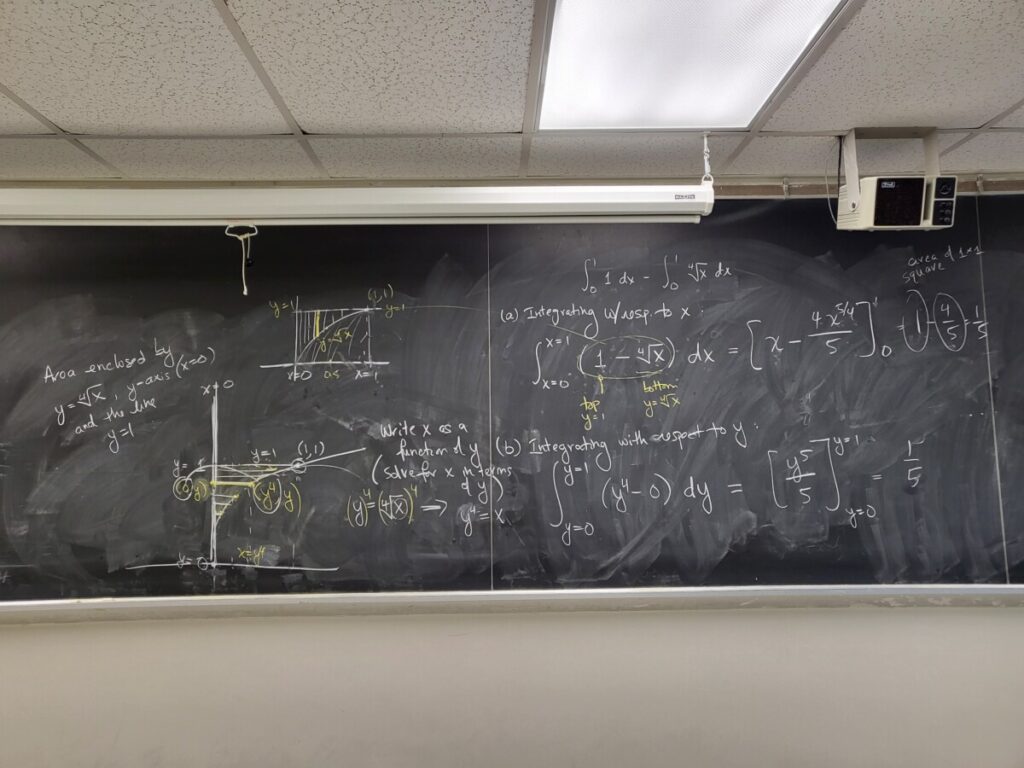Class Info
- Date: Wed Nov 1
- Meeting Info: 10a-11:40a, N719
Announcements
WebWork:
- “Applications – Areas Between Curves” (due Sun Nov 5)
- “Applications – Volumes of Revolution” (due Friday Nov 9)
We will have a quiz on Monday, with one exercise on integrating using the method of partial fractions and one exercise on computing the area between two curves.
Topics
We went through a few additional examples from the “Volumes of Revolution” WebWork set.
We introduced “the washer method,” which variation on the disk method, also used for calculating the volume of a solid of revolution “by slicing”–but for solids which have a hollow “cavity”, and so the object is sliced into “washers” (disks with an empty inner circle):

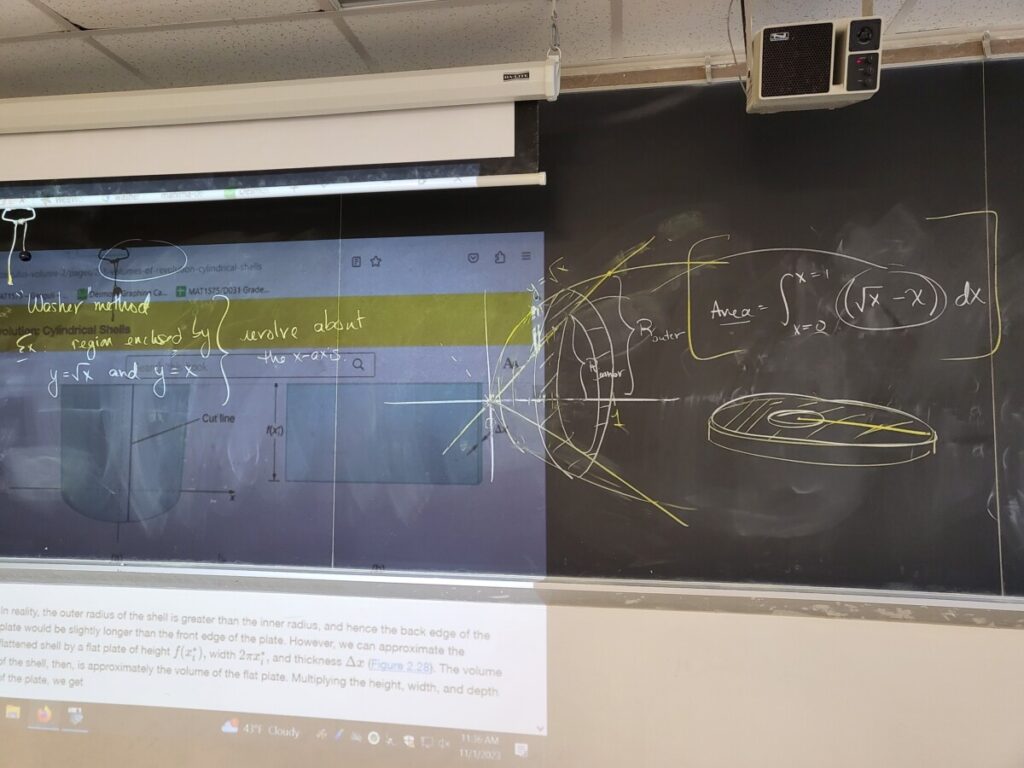
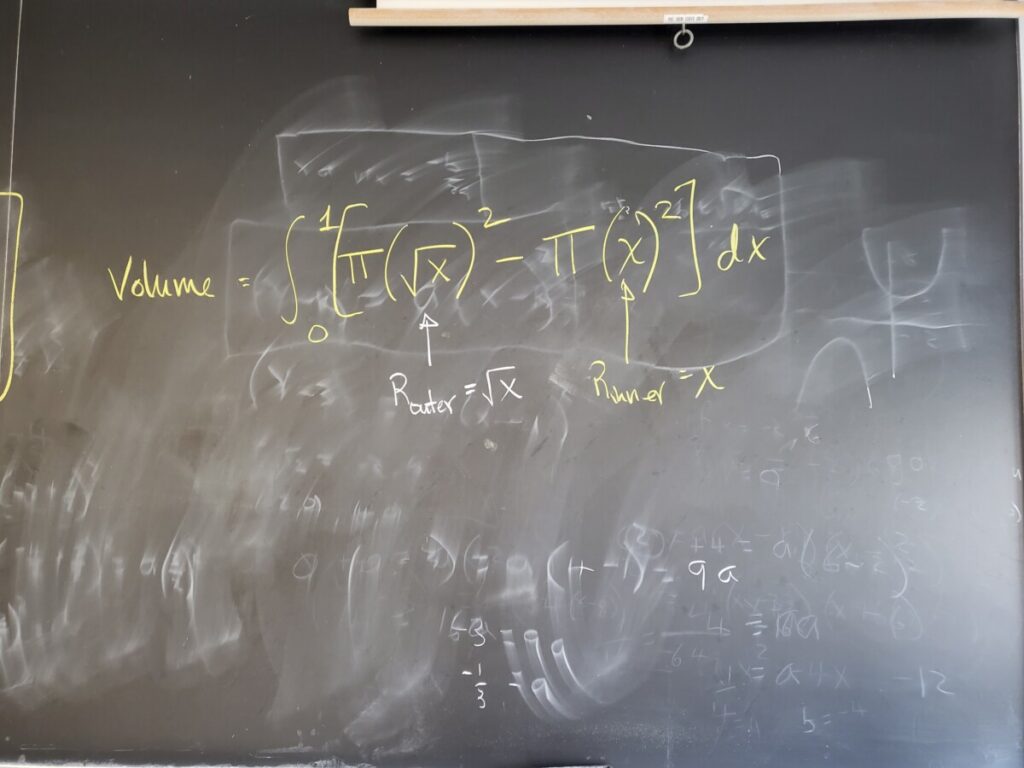
Here is a better sketch for that exercise:
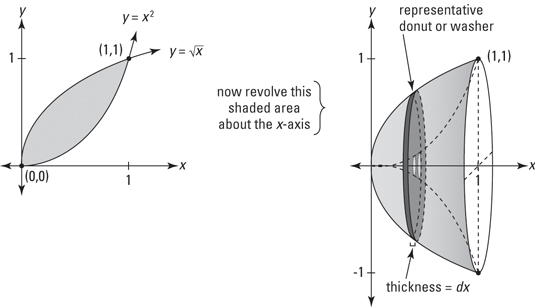
And here is an illustration of the general case, and the resulting integral:
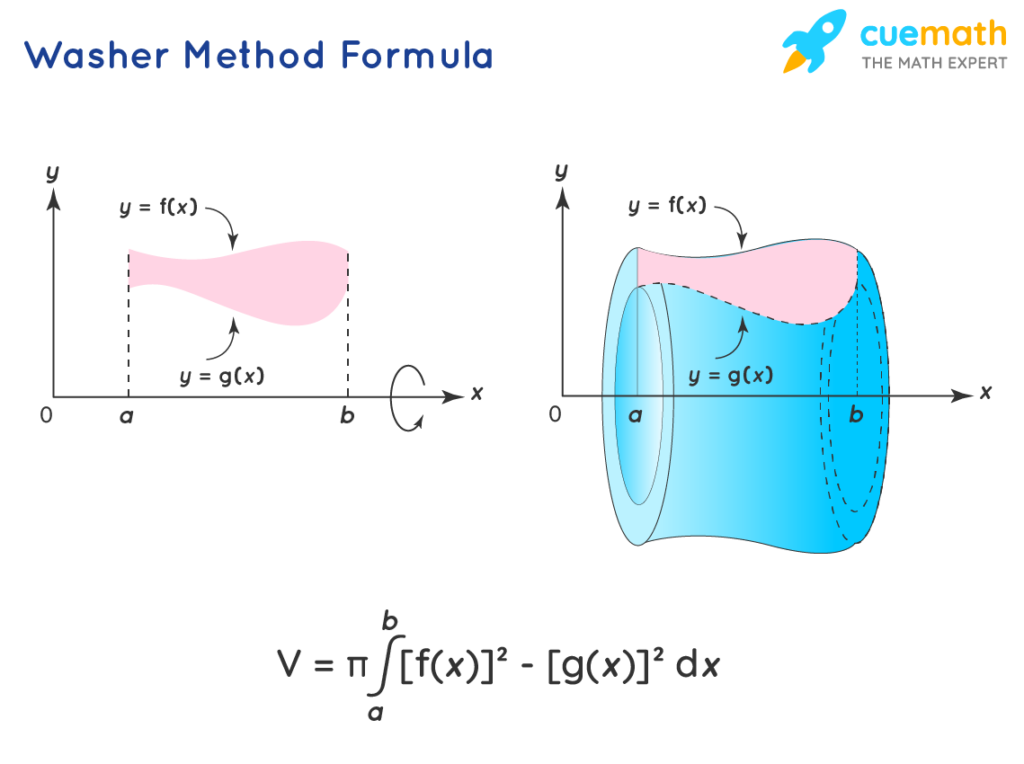
See also Example 2.10 from Sec 2.2 of the textbook. We watched parts of this video as well:
We also introduced a different method for calculating the volume of a solid of revolution: the method of “cylindrical shells.”
This is covered in Sec 2.3 of the textbook. Here are the images we looked at:


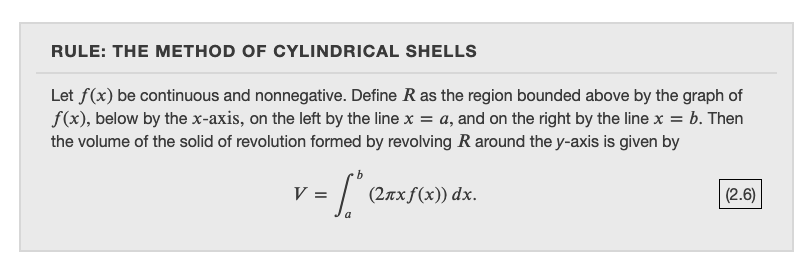
We set up an example from the WebWork:

Here is a video with more examples using the cylindrical shells method:
